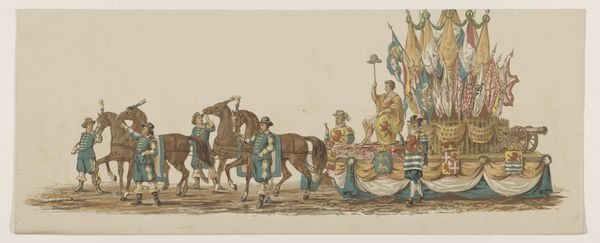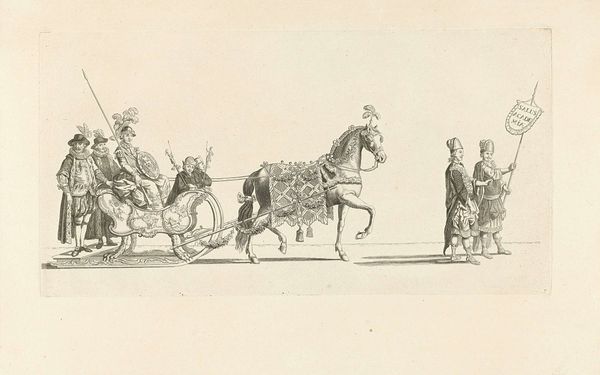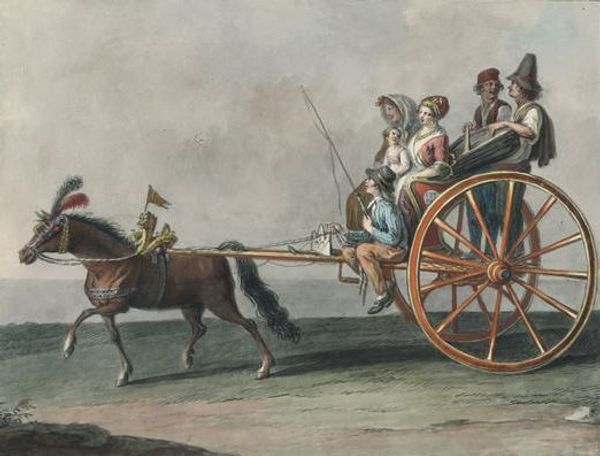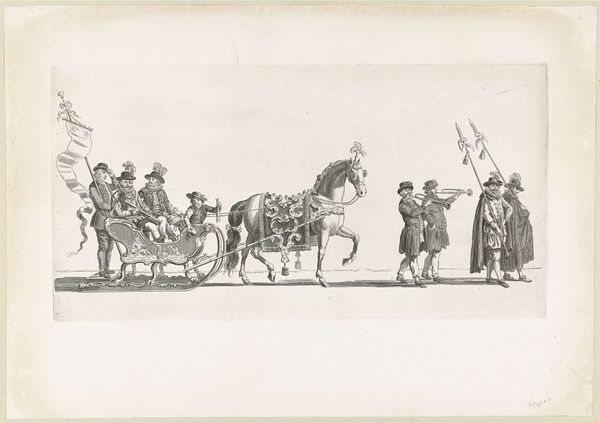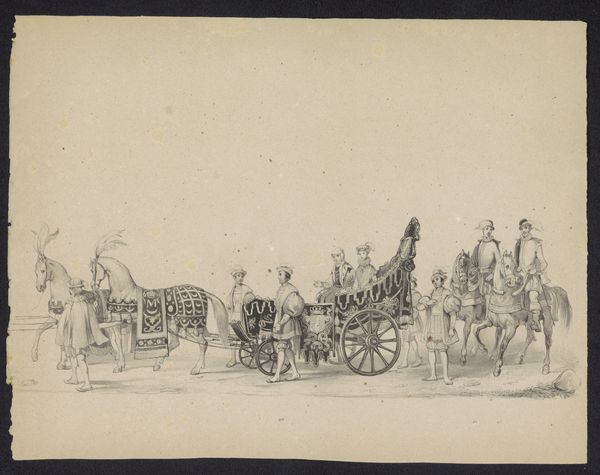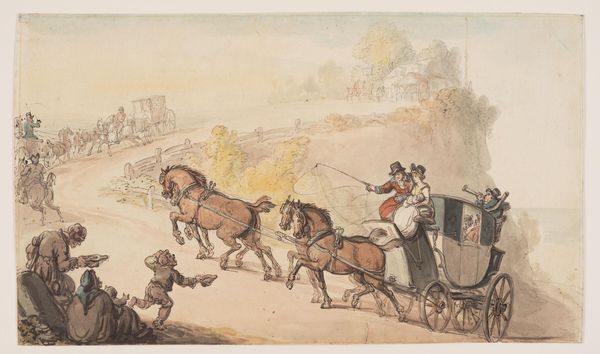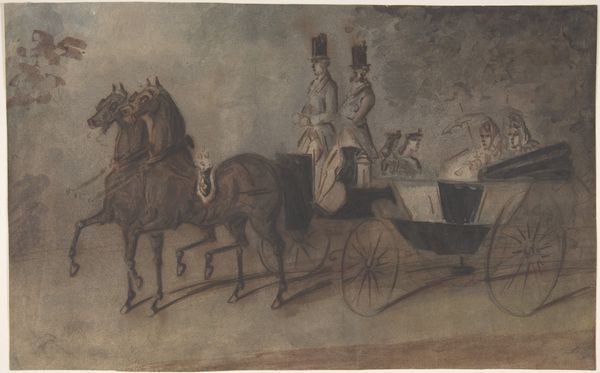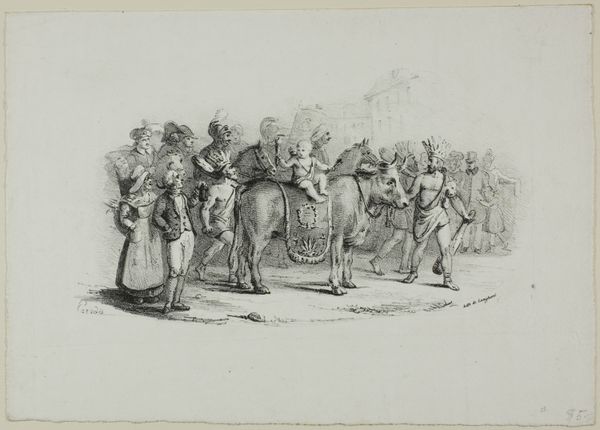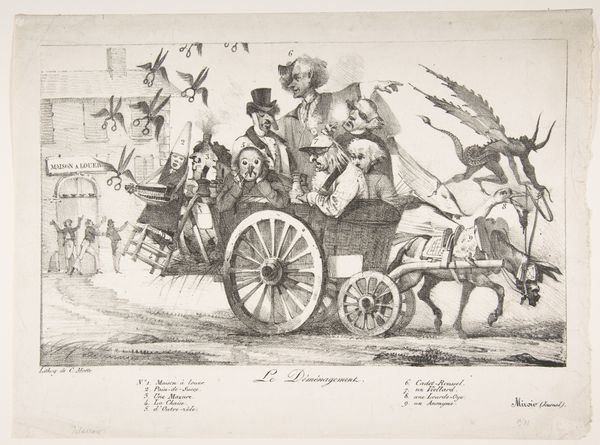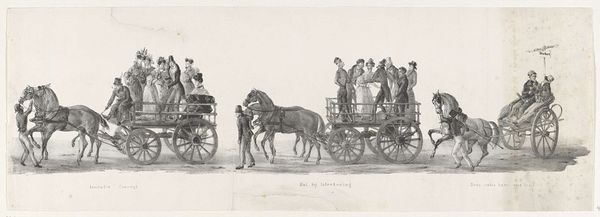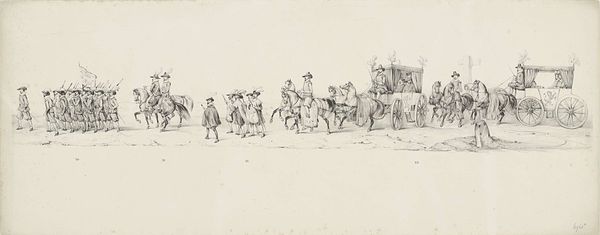
drawing, watercolor
#
drawing
#
figuration
#
watercolor
#
romanticism
#
watercolour illustration
#
genre-painting
#
watercolor
Copyright: Public Domain: Artvee
Curator: What a captivating swirl of figures and movement. Eugène Delacroix’s "Theatrical Troupe on the Road," created around 1818 using watercolor and drawing, really arrests the eye. What’s your first take? Editor: It feels immediately bustling, theatrical. The colour palette is quite muted; soft browns and blues dominate, creating a rather melancholic feel despite the apparent subject. The wagon teems with individuals, each a study in character and implied narrative. Curator: The composition, indeed, orchestrates our reading. Note the diagonal thrust from left to right, pulling our gaze along the route of the wagon. Delacroix skillfully uses washes of colour to define form and to build spatial depth, even though details are not rendered precisely. Editor: That visual emphasis perhaps mimics the actors heading toward somewhere—another town, another show. These individuals must confront various audience attitudes regarding performing arts—and how each group can be uplifted from mundane experiences into extraordinary emotions by watching them on the stage. Curator: Absolutely. The contrast in the depiction of light and shadow suggests that. How about focusing on that figure playing what appears to be a guitar off to the right. How do you understand his role here compositionally? Editor: He seems detached. His posture, pale costume and gaze draw our eyes out of the wagon and imply music will draw us from the scene. He offers a different register of life and artistic performance that may imply the entire travelling show can create transformation. The social dimensions of traveling performances shouldn't be minimized. Curator: Agreed. Although the lack of detail in the figures—the loose rendering of facial features and costumes—almost undermines a specific narrative. It emphasizes a transient experience, almost dream-like and intangible. Is that detachment or rather—delicacy? Editor: I think it captures Delacroix’s romantic leanings; he sees society at crossroads after revolution. There are actors donning military garbs that might imply new governance, others that seem to play parts in the theatrical production itself. Together, it can reflect both society and its representations. Curator: This piece underscores Delacroix's profound sensitivity. The Romantic impulse resonates through the composition, colour and subject matter. A compelling introduction to an important artistic period. Editor: Indeed. This exploration reinforces art’s ability to encapsulate social complexity and human conditions. An intriguing perspective for considering art and how people move to shape history.
Comments
No comments
Be the first to comment and join the conversation on the ultimate creative platform.
